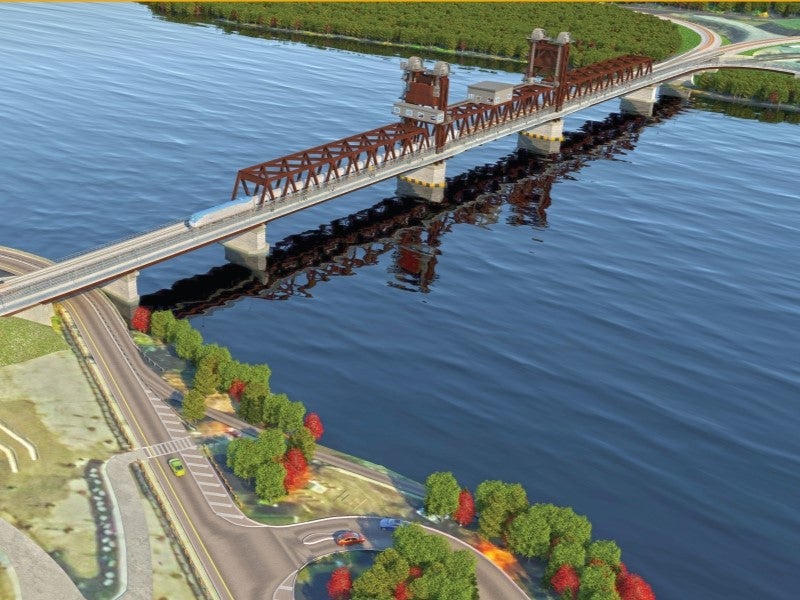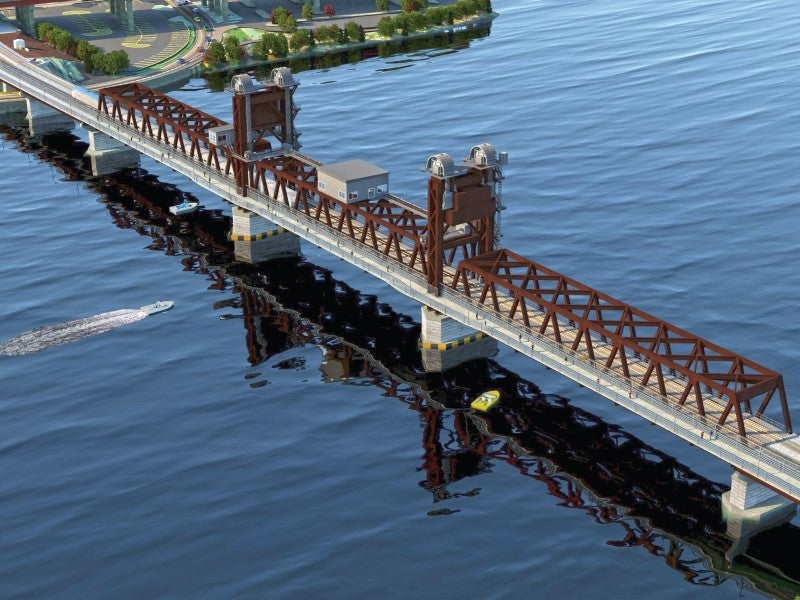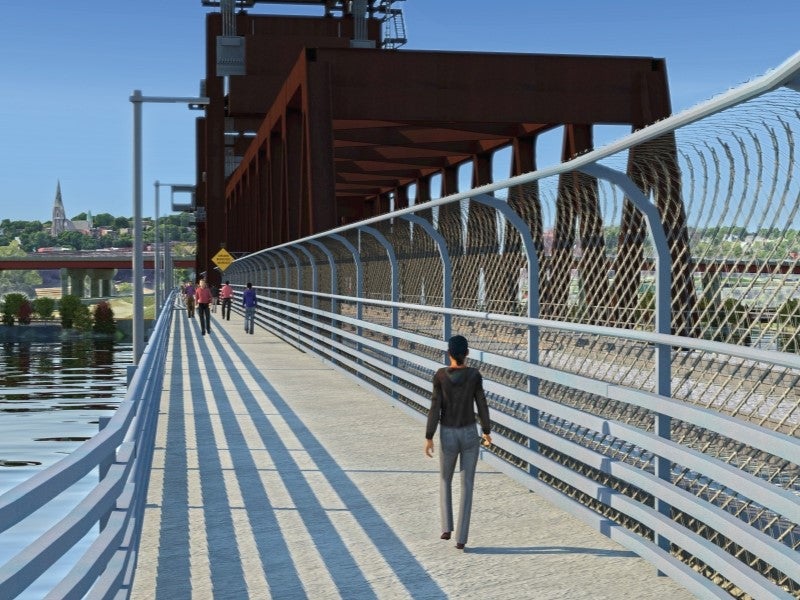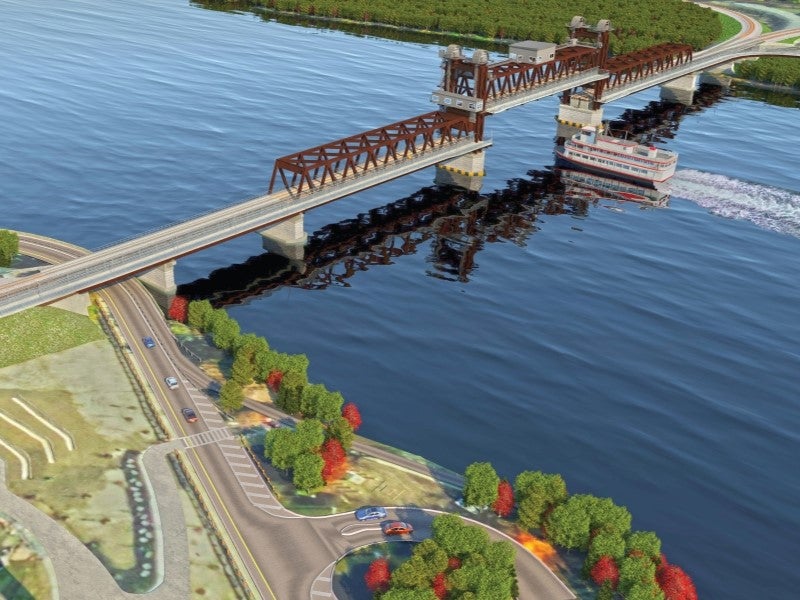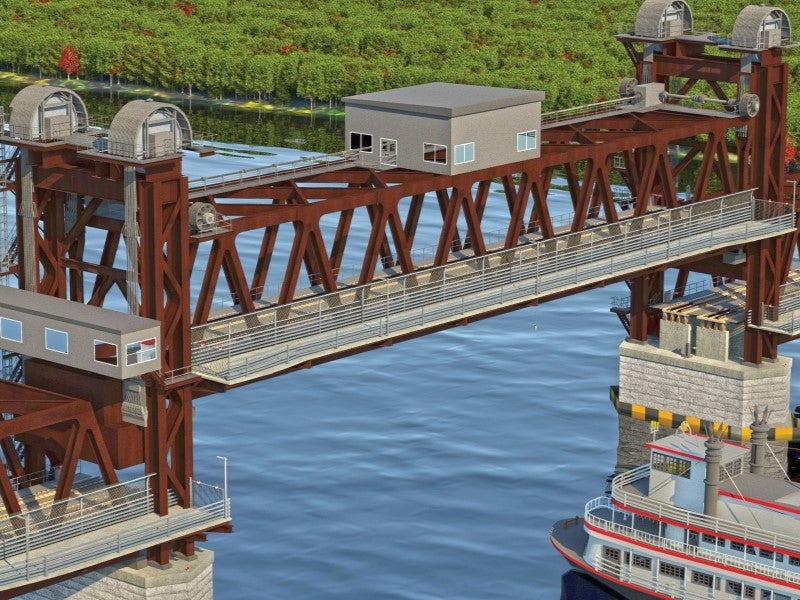The Livingston Avenue railroad bridge replacement project involves the development of a new bridge over the Hudson River, replacing the ageing original bridge connecting Albany and Rensselaer in New York, US.
It is part of the rail network on the Empire Corridor, one of 11 federally designated high-speed rail corridors in the US.
The project intends to enhance service and dependability along the Empire Corridor with a modern crossing and is expected to have positive impacts on the entire north-east’s rail network.
The project is a collaborative proposal from the New York State Department of Transportation (NYSDOT) and the US Federal Railroad Administration (FRA). It is being built with an estimated cost of $634.8m.
Construction commenced in May 2024, with an anticipated completion in March 2028.
Location of the Livingston Avenue Bridge project
The Livingston Avenue Bridge, located at Milepost QC 143.1 on the Hudson Line Section of CSX Transportation’s Subdivision of the Empire Corridor, is the only upstate passenger rail crossing over the Hudson River. CSX Transportation is a railroad transportation services provider in the US.
The bridge is a crucial link for both passenger and freight traffic. The 463-mile (745.1km) Empire Corridor provides passenger rail service between New York City and Niagara Falls.
Details of original Livingston Avenue Bridge
Owned by CSX Transportation and leased to the National Railroad Passenger Corporation (Amtrak), the original nine-span movable swing bridge was constructed in 1865.
The two-track bridge spans nearly 1,300ft (396.2m) and is supported by nine piers. It serves 14 Amtrak passenger trains and two to six daily freight trains operated by Canadian Pacific Railway and CSX.
The existing bridge no longer meets modern standards for load capacity, speed and height clearance, resulting in operational restrictions for both passenger and freight trains.
It supports the passage of only a single train at a time at a maximum speed of 15mph (24km/h), leading to frequent delays across the state’s rail network. Any detour would cause substantial delays of up to 2.5 hours.
The replacement project is a response to these challenges, aiming to eliminate the existing constraints and improve the overall efficiency of rail transportation in the region.
Livingston Avenue railroad bridge replacement project details
The new Livingston Avenue bridge will be a movable, seven-span, vertical lift-type railway bridge. It will be constructed south of the current structure over the Hudson River, designed to meet the current standards for dimensions and speeds.
The bridge will carry two railroad tracks, capable of supporting heavier freight loads. It will feature an increased width and height, allowing for the passage of taller rail cars and enhancing the efficiency of freight transport.
The bridge’s design includes a 2ft higher top of rail elevation compared to the existing bridge. This adjustment is to accommodate a deeper floor system while preserving the current clearance above the water when the bridge is in a closed position. It will also improve the reliability of marine traffic flow on the Hudson River.
The project also includes constructing control and machinery rooms, installing new railroad signals, implementing electrical infrastructure, and adding bridge and navigation lighting. In addition, it involves realignment, improvements, and reconfiguration and rehabilitation of additional rail bridges.
Incorporated into the project is a separate shared-use path that will offer pedestrians and cyclists a new route over the Hudson River.
The path will connect to various local attractions such as the Albany Skyway, the Empire State Trail, and the upcoming Rensselaer Riverwalk, a section of which is being developed as part of this project.
New bridge construction details
The construction plans involve building the new bridge in sections, allowing the current swing span to remain operational until the new structure’s lift span is ready.
The transition will involve a temporary closure to both rail and marine traffic for the float-in of the new span and removal of the old spans.
Approach track improvements are also part of the project, including enhancements to the triangular junction on the Rensselaer side for better train manoeuvrability and upgrades to the rail bridges over Water and Centre Streets in Albany.
The new bridge will further improve river navigation by expanding the channel width beneath the bridge from 100ft to 190ft, potentially reducing delays for river traffic.
Financing details
The investment in the Livingston Avenue Bridge project is part of the extensive $33bn five-year Capital Plan of the NYSDOT. The Capital Plan funding is a comprehensive investment strategy aimed at improving and modernising the state’s transportation infrastructure.
In addition to capital plan funding, NYSDOT is seeking federal competitive grant funding for the project under the Bipartisan Infrastructure Law.
Contractors involved
Skanska, a construction company based in Sweden, has been awarded a $635m contract by the NYSDOT for the bridge replacement.
Other partners include engineering consultants HNTB New York Engineering and Architecture, Garg Consulting Engineer, and Creighton Manning Engineering, along with construction engineering company LiRo Engineers.
Foit-Albert Associates, an architectural design and land surveying company; Genesis Structures, a structural engineering services provider; Haley & Aldrich, a geotechnical engineer; and Joseph C Lu Engineering, an environmental engineering services provider, are also involved in the project.

